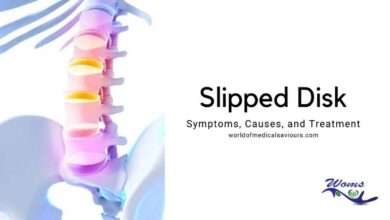What are the Most Common Birth Injuries in Newborn
Not every child born goes through a smooth delivery. Some fetuses that get stuck in the birth canal may be too big to pass through or harshly handled by the hospital staff. As a parent, the last thing you want is to witness your child get hurt, especially during such a delicate and vulnerable time. While some injuries are minor and go away on their own, others are severe and require a drastic lifestyle change.
The thought of your baby getting injured is hugely unsettling. This article aims to provide some valuable information to help you prepare for the worst. Here are some common birth injuries a child experiences birth:
What to Do If the Baby Is Injured?
Birth injuries are noticeable and require immediate medical attention. The awkward twisting of their limbs, facial drooping, paralysis, and bleeding are all signs the child was hurt. When a mother is in labor, it falls on the hospital staff to ensure it progresses smoothly. If both the mother and child are distressed and bullied, that warrants a legal case.
Contact a lawyer when you have evidence that your baby is suffering from a birth injury. Establishments like the birth injury justice center have the expertise to explain your case framework, including details on the wounds, medical help you can get, and the filing process.
Common Birth Injuries
Below is a list of injuries a baby has a high chance of getting during birth due to a large or narrow birth canal.
- Fractured Collarbones. A baby has to be supported when moving out of the birth canal. Doctors apply force around the head while lighting pushing on the collarbone to ease the delivery. However, when too much power gets used, and the staff may harshly jerk the baby, these soft bones get fractured. The extent of the fracture will determine the healing. Most fractures don’t require surgery and heal on their own but need immobilizing of the impacted area.
- Subconjunctival Hemorrhage. There are small blood vessels present in the baby’s eyes. These can break under high pressure causing the whites to turn red. Since these are not major blood vessels but minute ones, they heal independently and don’t cause permanent eye damage. The extreme pressure in the canal and during a poorly assisted delivery causes this injury. However, in a week or two, the redness fades away.
- Cerebral Palsy. 2 out of every 1,000 children may have cerebral palsy. It is a form of muscular atrophy in which a child cannot move their muscles, has uncoordinated control, and experiences spasms throughout their body. Most cerebral palsy cases stem from brain damage during the child’s birth. It cannot monitor the mother during labor and provide adequate guidance and breathing through each contraction.
It may also happen if doctors use outdated methods of birth, such as applying fundal pressure on the upper part of the uterus, which can cause fetal distress. A mother may also struggle to breathe during delivery, causing the baby to get insufficient oxygen and damaging the brain. Cerebral palsy is an extreme condition that often needs physical therapy. If the symptoms are mild, a doctor may suggest surgery. As the baby grows into a toddler, other signs such as hearing loss and poor vision may also develop.
- Facial Nerve Damage. We have cranial nerves in our face, which control facial movements. However, if the baby gets pulled with forceps or vacuum extraction during birth, it can damage these delicate nerves. As a result, the baby may experience facial paralysis and may not move one side of their face or any facial feature, including blinking.
- Cephalohematoma. When a baby gets injured under the cranial bone, this can result in a Cephalohematoma. This wound is a raised bump that can appear at the skull base for several hours after birth. The most common cause is using forceps with an extreme force that clamps tightly on the baby. While the bump may go away, a baby can develop other health conditions due to bone injury, including meningitis, jaundice, and anemia.
- Caput Succedaneum. When a baby gets stuck in the birth canal during delivery, external pressure is needed to move the fetus along. If this pressure is not timely given, the baby may suffocate. Therefore, doctors use vacuum suctions or forceps to pull the baby on top of the head. It can result in swelling on the scalp or several parts of the scalp, which can be bruised or discolored. These injuries are minute and will not cause serious harm to the child. Most bruises fade away with time. However, parents need to be gentle with handling the fragile head to prevent further damage.
Final Thoughts
Having a baby is a joyful moment, but sometimes the birth and delivery itself can become a complicated affair. Without the help of adequate staff and trained medical nurses, it isn’t easy to have a baby safely. But sometimes, these medical experts can cause your distress. Babies can get injured during birth for various reasons. These can be minor or major, depending on the situation.
No matter what, your child’s health should always be your priority. Some include fractures, redness in the eye, cerebral palsy, a bump on the skull base, and severe nerve damage or suction marks. If you feel the wound sustained is severe, you should seek legal consultation to help you through this tragic time.




